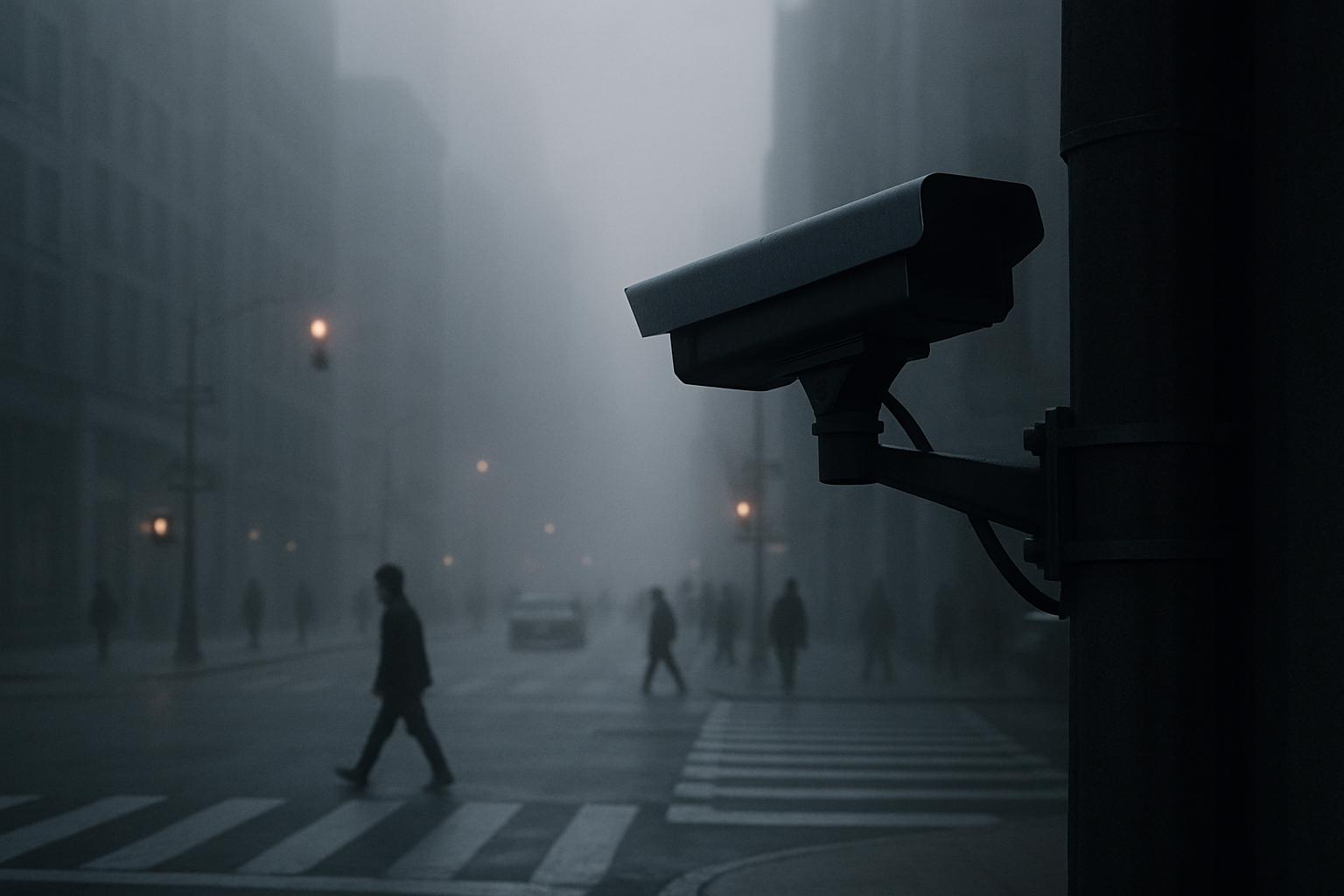In a striking development that echoes George Orwell’s dystopian vision in Nineteen Eighty-Four, the London Borough of Hammersmith & Fulham is advancing a sweeping expansion of AI-powered surveillance technology. This move comes amid Britain’s broader push towards tighter state control on identity and security, with the UK government recently unveiling plans for a mandatory digital ID system by 2029 to crack down on illegal immigration and employment.
Hammersmith & Fulham, already boasting more than 2,500 CCTV cameras—the highest density per capita in the UK—is set to enhance its surveillance network with £3.2 million in funding targeted at artificial intelligence and facial recognition technologies. According to the council, this upgraded system will introduce both live and retrospective facial recognition capabilities, enabling authorities to scan and retrospectively search CCTV footage to track known offenders’ movements across the borough. The installation of AI-equipped drones is also part of the plan, with the council aiming to tackle fly-tipping and other forms of anti-social behaviour.
The council's justification for this high-tech leap is rooted in crime prevention and public safety. Council leader Stephen Cowan framed the investment as a means to give families peace of mind, ensure justice for victims, and send a clear message to criminals that there will be nowhere to hide within the borough. The council highlights its significant contribution to policing, with their existing camera network playing a part in hundreds of arrests this year alone.
However, the decision has sparked unease among residents and civil rights advocates. Some local businesses have expressed reservations about the constant surveillance, equating the system to authoritarian models seen overseas. A local stall owner voiced concerns about privacy and potential misuse, especially in politically sensitive situations such as protests. Among the wider public, there is scepticism about how such powerful surveillance tools will be deployed and whether they will disproportionately target minor infractions or vulnerable groups rather than serious criminals.
Civil rights group Big Brother Watch has warned against the council’s expansive use of facial recognition technology, arguing that this tool is best reserved for national security and not petty crimes such as fly-tipping—a common issue the council aims to address with its drones. The group also raised concerns about racial bias inherent in facial recognition systems, a challenge acknowledged by the council, which admitted higher error rates for darker-skinned individuals, particularly Black people.
Moreover, the council admits that while live facial recognition data will be shared only with the police, the use and retention of retrospective data remains less transparent, prompting fears about potential misuse of historic footage. Critics point out that police themselves can sometimes pursue historic cases selectively, raising questions about future priorities under this new surveillance regime.
Interestingly, recent clarifications from the borough’s public protection officers conflict somewhat with the council’s announcements. Earlier statements denied plans to implement facial recognition within the council’s CCTV network, emphasizing ethical AI use without spyware functions. This apparent reversal in policy signals a rapid expansion in surveillance acceptance, with a growing reliance on AI tools in local governance.
This technological push in Hammersmith & Fulham reflects a broader national trend, where the government intends to introduce mandatory digital ID cards by 2029, requiring citizens and residents to verify identity for employment and access to public services. While touted as a security and immigration control measure by Prime Minister Keir Starmer’s administration, these moves have ignited political backlash and privacy concerns reminiscent of earlier UK identity card proposals that were shelved over civil liberties fears. Critics highlight risks such as the erosion of anonymity and the potential for bureaucratic overreach.
The community’s reaction to these developments is divided. While some, especially victims of crime or those concerned about safety, welcome the technology, others worry about the normalisation of constant surveillance and the creeping intrusion into everyday life. The spectre of ‘Little Brother’ watching alongside ‘Big Brother’ has awakened fresh debates about the balance between security and freedom in modern Britain.
In practical terms, the effectiveness of this expanded surveillance depends heavily on operational details. Proponents cite successful arrests linked to existing CCTV footage, including in serious cases like a double murder in Shepherd’s Bush supported by council cameras. Nonetheless, questions remain about enforcement priorities, privacy safeguards, technological accuracy, and the potential for misuse or mission creep.
Parliamentary scrutiny of facial recognition technology in the UK has so far been limited, with a single debate held not in the Commons but in Westminster Hall, revealing cross-party concerns about civil rights and legality. MPs such as Dawn Butler and Sir David Davis have cautioned against the assumption of guilt by machine and municipal overreach, respectively, calling for robust regulation and oversight before such technologies become widespread.
As local councils begin to assume roles traditionally held by law enforcement with AI surveillance tools, the pressing question is how to ensure that the drive for safer communities does not unduly sacrifice privacy, fairness, and public trust. Hammersmith & Fulham’s experiment may set a precedent—or a warning—for other municipalities considering similar steps.
📌 Reference Map:
- Paragraph 1 – [1], [2], [3]
- Paragraph 2 – [1], [5], [6]
- Paragraph 3 – [1], [5], [6]
- Paragraph 4 – [1], [5]
- Paragraph 5 – [1], [5]
- Paragraph 6 – [1], [5]
- Paragraph 7 – [4], [5]
- Paragraph 8 – [1], [5], [6]
- Paragraph 9 – [1], [2], [3]
- Paragraph 10 – [1], [5], [6]
- Paragraph 11 – [1], [5]
- Paragraph 12 – [1], [5]
- Paragraph 13 – [1], [5]
- Paragraph 14 – [1], [3]
Source: Noah Wire Services
